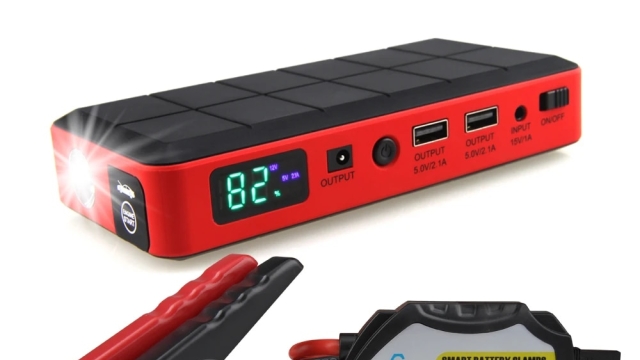Welcome to "The Ultimate Guide to Flat Tire Change and Towing: Your Go-To Resource for Roadside Emergencies"! Dealing with car troubles on the road can be stressful and inconvenient, but fear not, as we have got you covered. In this comprehensive guide, we will walk you through everything you need to know about flat tire changes and towing, ensuring that you are well-prepared for any unexpected situations.
When it comes to encountering a flat tire, it’s essential to stay calm and follow the correct procedures for a safe and efficient tire change. We will provide you with step-by-step instructions on how to properly change a flat tire, along with some useful tips and tricks to make the process easier. Whether you are a seasoned driver or a novice, our guide will equip you with the necessary knowledge to handle this common roadside emergency with confidence.
In addition to flat tire changes, we will also explore the topic of towing and its importance in certain situations. Sometimes, a flat tire or other mechanical issues may require professional assistance and towing services. We’ll discuss when it’s appropriate to call for a tow, what to consider when choosing a towing service, and introduce you to "Rick’s Emergency Roadside Assistance" – your trusted partner for 24/7 towing and roadside services in Chicago.
So, fasten your seatbelt, relax, and let us take you on a journey through the ins and outs of flat tire changes and towing. By the end of this guide, you’ll feel empowered to tackle any roadside emergency confidently and, most importantly, get back on the road swiftly and safely. Let’s dive in!
1. Car Jump Starts
In the event of a dead car battery, a car jump start can quickly get you back on the road. Here are a few simple steps to follow:
Safety First: Before attempting a jump start, ensure that both vehicles are parked in a safe location away from traffic. Turn off the ignition, and engage the parking brakes on both vehicles.
Gather Supplies: You’ll need a set of jumper cables and a vehicle with a charged battery. If you don’t have jumper cables, consider investing in a portable jump starter kit for added convenience.
Connect the Cables: Identify the positive and negative terminals on both batteries. Begin by connecting the red positive cable to the positive terminal of the dead battery. Then, connect the other end of the red cable to the positive terminal of the charged battery.
Ground Connection: Take the black negative cable and attach one end to the negative terminal of the charged battery. Finally, find an unpainted metal surface on the dead car, such as a bolt or bracket, and connect the other end of the black cable to that surface.
Start the Engine: Start the engine of the vehicle with the charged battery and let it run for a few minutes. Then, try starting the engine of the vehicle with the dead battery. If it starts, let it run for a while to recharge the battery.
Battery Boost Service
Remember, if you’re unsure about the process or encounter any difficulties, it’s best to contact a professional roadside assistance service like "Rick’s Emergency Roadside Assistance." They offer 24/7 towing and roadside services in Chicago, ensuring you have a trusted partner in times of roadside emergencies.
2. Car Lockouts
Getting locked out of your car can be a frustrating and unexpected situation. Whether you accidentally left your keys inside the car or misplaced them, it can leave you feeling stranded. However, with the right knowledge and resources, you can quickly resolve a car lockout and get back on the road in no time.
When faced with a car lockout, the first step is to remain calm and assess the situation. Check if any windows are open or if there is a spare key accessible. In some cases, a simple solution may be within reach. However, if these options are not available, it is best to seek professional assistance.
Rick’s Emergency Roadside Assistance offers reliable and efficient car lockout services in Chicago. With their experienced technicians and state-of-the-art tools, they can safely unlock your car without causing any damage. Their round-the-clock availability ensures that help is just a phone call away, no matter the time or location.
Remember, attempting to unlock your car yourself using unconventional methods can lead to expensive repairs or further damage. It is always recommended to rely on professionals who have the expertise to handle car lockouts efficiently and effectively. Next time you find yourself locked out of your car, trust Rick’s Emergency Roadside Assistance to provide the timely and reliable assistance you need.
3. Flat Tire Change
Changing a flat tire can be a frustrating experience, but with the right knowledge and tools, you can get back on the road in no time. Here are some essential steps to follow when facing a flat tire emergency:
Safely park your vehicle: When you notice a flat tire, find a safe spot to pull over away from traffic. Turn on your hazard lights to alert other drivers.
Gather the necessary tools: You’ll need a spare tire, jack, lug wrench, and a wheel chock. These tools are often found in the trunk or under the vehicle. Place the wheel chock securely behind one of the tires to prevent any rolling.
Loosen the lug nuts: Use the lug wrench to loosen the lug nuts on the flat tire. Don’t remove them completely just yet, as you’ll do this step when the vehicle is raised.
Lift the vehicle: Locate the appropriate jacking points on your vehicle, usually indicated by small notches or arrows. Carefully position the jack under the vehicle and pump it up until the flat tire is lifted slightly off the ground.
Remove the flat tire: Now, you can fully remove the lug nuts and take off the flat tire. Remember to place the lug nuts in a secure location, as you’ll need them later.
Install the spare tire: Carefully align the spare tire with the lug bolts and push it onto the wheel hub. Hand tighten the lug nuts as much as possible.
Lower the vehicle: Slowly lower the vehicle by reversing the jacking process until the spare tire gently touches the ground. At this point, you can fully tighten the lug nuts in a star or cross pattern, ensuring they are secure.
Remember, driving on a spare tire is generally temporary, so it’s essential to visit a professional tire shop as soon as possible to have your original tire repaired or replaced.



